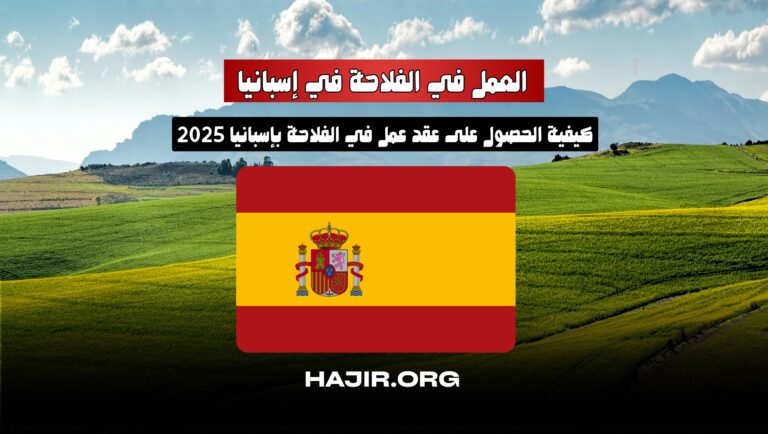Are you dreaming of a fresh start in the vast, scenic landscapes of rural Canada? With its stunning natural beauty, welcoming communities, and growing demand for skilled workers, rural Canada offers a unique path to permanent residency and long-term employment in 2025. As of September 15, 2025, programs like the Rural Community Immigration Pilot (RCIP) have opened doors for newcomers to settle and work in smaller towns and remote areas, addressing labor shortages while providing a high quality of life. This guide explores how to travel to rural Canada for permanent work, covering immigration pathways, job opportunities, travel logistics, cost of living, and practical tips. Whether you’re from Egypt, India, or elsewhere, 2025 is an ideal time to make the move—let’s break it down!
Understanding Permanent Work in Rural Canada
Rural Canada encompasses everything from the prairies of Saskatchewan to the forests of Northern Ontario and the coastal communities of Nova Scotia. Unlike bustling cities like Toronto or Vancouver, rural areas offer a slower pace, lower costs, and strong community ties, but they face challenges like labor shortages in key sectors. Permanent work here means securing a job offer that leads to long-term residency, often through employer-driven immigration programs.
The flagship pathway in 2025 is the Rural Community Immigration Pilot (RCIP), launched on January 31, 2025, as a replacement for the Rural and Northern Immigration Pilot (RNIP), which ended in August 2024. This program targets 14 participating communities, including Sault Ste. Marie (ON), Timmins (ON), Brandon (MB), and Pictou County (NS), offering permanent residence (PR) to skilled workers willing to live and work there. Unlike urban-focused programs, RCIP emphasizes community integration, with local economic development organizations recommending candidates based on job offers from designated employers.
Other options include provincial nominee programs (PNPs) like Alberta’s Rural Renewal Stream or Ontario’s Regional Economic Development through Immigration (REDI) pilot, which also prioritize rural settlement. These pathways allow you to transition from a temporary work permit (up to 2 years) to PR, often within 6–12 months of arrival. In 2025, Canada’s Immigration Levels Plan allocates about 62% of PR admissions to economic streams, with a focus on in-Canada experience and rural priorities.
100 Workers Needed in Spain’s Automotive Production Sector – No Experience Required
Key Immigration Programs for Permanent Residency in 2025
To work permanently in rural Canada, you’ll need a pathway to PR. The RCIP is the most direct, requiring:
- A Job Offer: From a designated employer in one of the 14 communities, in priority sectors like healthcare, trades, manufacturing, or agriculture. For example, Timmins seeks nurses and welders, while Sault Ste. Marie needs machinists.
- Work Experience: At least 1 year (1,560 hours) in the past 3 years, related to the job (exemption for recent graduates from local post-secondary institutions).
- Language Proficiency: CLB 5–7 in English or French (e.g., IELTS 5.0 overall).
- Education: Minimum high school diploma (or equivalent, with ECA for foreign credentials).
- Settlement Funds: Proof of funds for yourself and family (e.g., CAD 13,757 for one person).
- Intent to Reside: A commitment to live in the community long-term.
Once recommended by the community, apply for PR via IRCC (processing time: 6–12 months; fee: CAD 1,525). Non-EU applicants can get a 2-year work permit while waiting. Other programs like the Atlantic Immigration Program or PNPs in Manitoba and Saskatchewan also support rural PR.
For those without experience, entry-level roles in farming, retail, or hospitality qualify under RCIP’s priority lists. As of mid-2025, intake periods are ongoing, with communities like Brandon and West Kootenay actively recruiting.
Popular Job Opportunities in Rural Canada
Rural Canada needs workers in sectors like agriculture, healthcare, trades, and tourism. In 2025, entry-level jobs (no experience required) are abundant, especially under RCIP. Examples:
- Agriculture/Farming: Roles like farm laborers or general workers in Saskatchewan or Manitoba (CAD 15–20/hour). No experience needed; on-the-job training provided.
- Healthcare Support: Care aides or assistants in Northern Ontario (CAD 20–25/hour). Short training courses available locally.
- Trades and Manufacturing: Entry-level machinists or packagers in Timmins (CAD 18–22/hour). Apprenticeships lead to certification.
- Hospitality/Retail: Servers or store clerks in Pictou County (CAD 15–18/hour + tips). Seasonal roles can transition to permanent.
Over 2,000 rural jobs are listed on Indeed, many open to newcomers. Platforms like Job Bank (jobbank.gc.ca) and community sites (e.g., welcometossm.com) post opportunities. Salaries average CAD 40,000–60,000/year for entry-level, rising with experience.
Free Volunteer Program in France, Fully Funded 2026
Travel Logistics to Rural Canada
Traveling to rural Canada in 2025 is straightforward but requires planning, especially for remote areas.
- Flights: Fly into major hubs like Toronto Pearson (YYZ), Vancouver (YVR), or Calgary (YYC) from international origins (e.g., CAD 800–1,500 round-trip from Europe/Middle East). From there, domestic flights to regional airports (e.g., Sudbury for Northern ON) cost CAD 200–500. Airlines like Air Canada or WestJet offer rural routes.
- Ground Transport: Rent a car (CAD 50–80/day) for flexibility, as public transit is limited. Buses (e.g., Greyhound alternatives like Rider Express) or trains (VIA Rail) connect cities to rural spots (CAD 100–300 one-way). For PR applicants, arrive on a work permit and settle within 30 days.
- Visa/Entry: With a job offer under RCIP, apply for a work permit (eTA for visa-exempt; visitor visa otherwise). Processing: 4–8 weeks. Total travel cost: CAD 1,500–3,000 for one person, including flights and initial transport.
Cost of Living in Rural Canada
Rural living is more affordable than urban Canada, with 2025 estimates showing 20–40% savings on housing and transport. Average monthly costs for a single person: CAD 2,000–3,000; family of four: CAD 4,000–6,000.
- Housing: Rent a 1-bedroom apartment for CAD 800–1,200/month (vs. CAD 2,000+ in Toronto). Buying: CAD 200,000–400,000 for a home.
- Food: Groceries CAD 300–500/month; eating out CAD 15–25/meal. Rural areas have lower prices for local produce.
- Transport: Gas CAD 1.50–1.80/liter; public transit CAD 100/month (limited). Owning a car: CAD 200–400/month.
- Utilities/Other: CAD 150–250/month (internet, heat); healthcare free via provincial plans after 3 months.
Provinces like Manitoba or Saskatchewan are cheapest (CAD 1,800–2,500/month single), while BC rural areas are higher (CAD 2,500+). With a CAD 45,000–50,000 salary, you’ll live comfortably.
Steps to Get Started in 2025
- Research Communities: Visit canada.ca for RCIP details and community sites (e.g., timminsedc.com).
- Find a Job: Use Job Bank or Indeed for rural postings (2,000+ available). Network via LinkedIn.
- Apply for Recommendation: Secure a job offer; get community endorsement.
- Immigration Application: Submit PR via IRCC; get work permit if needed.
- Prepare to Travel: Book flights; arrange initial housing through employer/community support.
- Settle In: Access free settlement services for housing, language, and integration.
Elderly Care Workers Wanted in New Zealand with Visa Sponsorship: $28/Hour
Challenges and Tips for Success
Challenges include limited public transport, harsh winters, and isolation, but communities offer support like mentoring. Tips: Learn basic French/English, save for initial costs (CAD 10,000–15,000), and connect with local immigrant groups. Rural life means nature, community events, and work-life balance—perfect for families.
Conclusion: Make Rural Canada Your Permanent Home in 2025
Traveling to rural Canada for permanent work in 2025 is achievable through programs like RCIP, offering PR, jobs in high-demand sectors, and affordable living (CAD 2,000–3,000/month single). With flights to hubs and ground transport to remote areas, the journey is straightforward. Start by securing a job offer and applying today—rural Canada awaits your contribution to its vibrant communities!
Ready to Apply? Visit canada.ca for RCIP details and jobbank.gc.ca for opportunities. Your new life starts now! 🇨🇦




